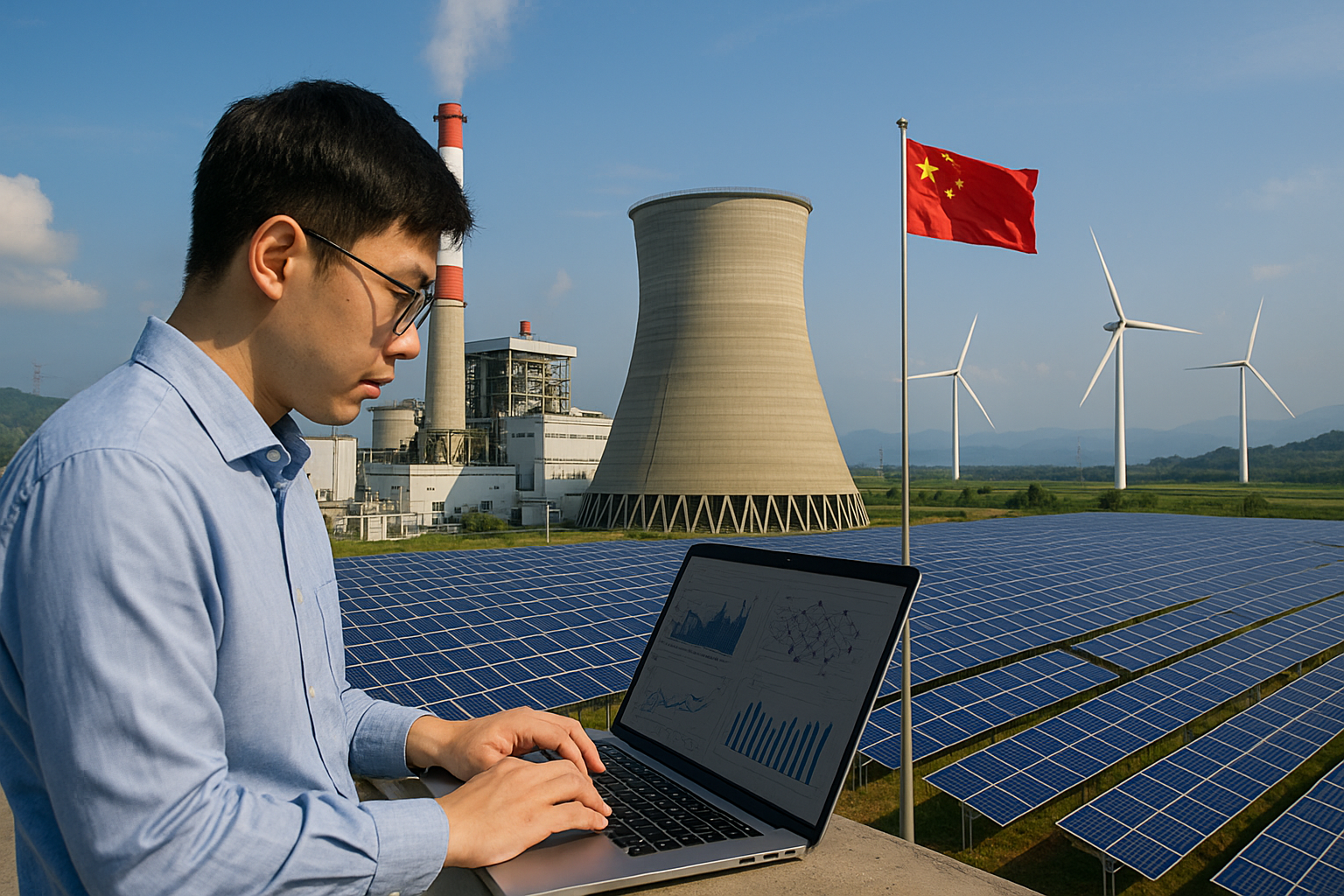AI-Driven Hybrid Models Forecast China’s Energy and Fuel Use for a Greener Future
The study by researchers from Jiangxi’s universities introduces hybrid machine learning models optimized with Artificial Rabbits Optimization to predict China’s energy, fossil fuel, and electricity consumption with high accuracy. It finds CatBoost-ARO best for total and electric usage, XGBR-ARO for fossil fuels, offering a powerful AI-driven path toward sustainable and green economic growth.

The study "Advanced Machine Learning Approaches for Predicting Energy and Fossil Fuel Consumption for Green Growth" by Song Li and Jun Li from the School of Software Engineering, Jiangxi University of Software Professional Technology, and Lei Luo from the School of Network Engineering, Jiangxi Software Vocational and Technical University, explores how artificial intelligence can guide China toward sustainable energy management. As industrialization and urbanization have fueled China's rapid economic ascent, they have also caused an alarming surge in energy consumption and environmental degradation. Fossil fuels still dominate nearly 90 percent of China's energy structure, straining ecosystems and worsening pollution. The paper argues that accurate energy forecasting is essential for achieving green growth, a model that aligns economic progress with environmental preservation. By introducing machine learning (ML) methods optimized through a bio-inspired algorithm, the study aims to develop reliable predictive tools that can help the country balance growth and sustainability.
Innovation Gaps and the Need for Sustainable Transformation
The authors describe a landscape where industrial growth has outpaced environmental awareness. While China's technology and manufacturing sectors have achieved remarkable productivity, green innovation remains uneven. Sectors such as education, electronics, and cultural manufacturing have adopted sustainable technologies, but heavy industries like chemicals, petroleum processing, and metal production continue to lag behind. The study highlights that technological innovation must serve as the foundation for future economic competitiveness, focusing on energy efficiency and environmental responsibility. Green growth, the researchers explain, delivers dual benefits, stimulating business competitiveness and safeguarding ecological systems. International bodies such as the United Nations Environment Programme and the OECD consider this balance a prerequisite for sustainable development. In this context, China's transition to cleaner industrial practices depends on data-driven innovation capable of predicting and optimizing energy consumption across provinces.
Hybrid Machine Learning Models and the Artificial Rabbits Optimization
To address this need, the researchers propose a unique hybrid forecasting framework combining four ML models, CatBoost, LightGBM, XGBR, and HGBR, with the Artificial Rabbits Optimization (ARO) algorithm. Inspired by the survival strategies of wild rabbits, ARO enhances each model's hyperparameters through a balance of exploration and exploitation. The algorithm simulates how rabbits alternate between foraging far from their nests and hiding from predators, using a variable called "rabbit energy" to control optimization behavior. This process allows the models to adjust dynamically and capture complex, nonlinear relationships within data. The study uses information from the WIND Database, covering the years 2009 to 2016 and 24 Chinese provinces. Variables include innovation indicators (such as patent counts and R&D spending), financial performance (debt ratios, equity multipliers, and liquidity), and business growth metrics (asset expansion and return on equity). The dataset was split 80–20 between training and testing subsets to ensure reliable validation of predictive accuracy.
Performance Evaluation and Statistical Validation
Model performance was rigorously tested using statistical indicators such as Root Mean Square Error (RMSE), Coefficient of Determination (R²), Mean Absolute Percentage Error (MAPE), Mean Bias Error (MBE), and Jensen–Shannon Divergence (JSD). The experiments were implemented in Python using scikit-learn, Pyomo, NumPy, and Matplotlib, running on a high-capacity workstation. The results are both impressive and revealing. During the training phase, XGBR-ARO and LightGBM-ARO achieved near-perfect performance with R² values of 1.0 and zero RMSE errors, meaning they captured nearly all patterns in the historical data. However, when applied to unseen testing data, CatBoost-ARO consistently delivered the highest generalization performance in forecasting total energy and electricity consumption, reaching R² values of 0.984 and 0.989, respectively. For fossil fuel consumption, XGBR-ARO emerged as the most accurate model with an R² of 0.991, while HGBR-ARO lagged, showing higher variability and weaker robustness. Graphical analyses, including scatter plots and box plots, confirmed these outcomes, revealing close alignment between predicted and actual values and minimal error dispersion.
Key Findings and Future Implications
The comparative analysis highlights that each model excels in distinct areas: CatBoost-ARO is most effective for total and electricity usage, XGBR-ARO dominates fossil fuel forecasting, and LightGBM-ARO performs competitively but with slightly lower resilience on new data. The study emphasizes that no single model can universally outperform others across all energy components; each must be selected according to the prediction target. This insight offers a practical framework for policymakers and energy planners aiming to tailor forecasting systems to specific sectors or energy types. By integrating artificial intelligence and bio-inspired optimization, the researchers have advanced a method that enhances both precision and adaptability in energy management.
The paper concludes that hybrid ML-ARO systems can transform how nations manage energy transitions. These tools can provide governments, energy firms, and sustainability agencies with accurate forecasts that inform resource allocation, carbon mitigation strategies, and industrial policy design. The authors suggest expanding future research to include climatic variables, renewable energy data, and extended time horizons, ensuring broader applicability across diverse contexts. As the global economy moves toward decarbonization, this study from the Jiangxi research institutes underscores how intelligent forecasting can bridge the gap between economic ambition and ecological responsibility, offering a scientific pathway toward a cleaner, smarter, and more sustainable energy future.
- FIRST PUBLISHED IN:
- Devdiscourse
ALSO READ
-
Amazon to cut 14,000 corporate jobs as it ramps up spending on artificial intelligence, reports AP.
-
Artificial intelligence strengthens fiscal transparency in public finance
-
From data to safety: Artificial intelligence transforms coal mine risk management
-
Machine learning to deep learning: The new frontline in global phishing defense
-
How artificial intelligence can build trust and counter misinformation in crises









